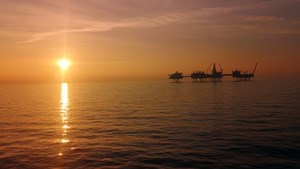Norwegian government greenlights Johan Sverdrup start
OSLO - The Norwegian Petroleum Directorate has granted its consent for start-up of the Johan Sverdrup field in the North Sea. The field is expected to produce oil for the next 40 years.
Operator Equinor plans startup sometime this autumn for the first phase of the field development. Construction phase two is slated to start in the fourth quarter of 2022.
“The Johan Sverdrup field is a shining example of the possibilities and the values that can be achieved through exploration of mature petroleum provinces on the shelf,” said Ingrid Sølvberg, director, development and operations in the Norwegian Petroleum Directorate.
Sølvberg said that Johan Sverdrup is the third largest oil field on the Norwegian shelf – measured in reserves. Only Statfjord and Ekofisk, both also in the North Sea, are larger.
According to Equinor, investment costs for development of the first stage of construction are expected to be NOK 83 billion.
Estimates indicate that the total recoverable reserves are about 430 million standard cubic meters of oil equivalents (2.7 Bbbloe.)
About 95% of this is oil, 3% is dry gas and the rest is NGL (Natural Gas Liquids). The field has a production capacity of 105,000 cubic meters of oil per day (660,000 bbls per day).
Sølvberg notes that the job is not done and that the NPD focuses on ensuring that the licensees “continue to work to develop production technology and that they make decisions to promote measures that can enhance value creation from the field.”
The Johan Sverdrup development is being implemented in two stages of construction. The first construction stage includes a field center with four installations connected by bridges. The four installations are a living quarters platform with auxiliary systems, a process platform, a drilling platform and a riser platform.
Pipelines for transporting oil and gas, the power from shore unit and three subsea templates for water injection are linked to the riser platform.
The second construction stage consists of an expansion of the field center with a new process platform, five subsea templates connected to the field center and development of the outer areas of the reservoir.
Further development of central areas is also planned through additional wells from the drilling platform.
Electric power for normal operation of the Johan Sverdrup field will be supplied from the land-based grid. Operation of the area solution for power from shore is defined in the Plan for Installation and Operation (PIO).
Gas and stabilized oil will be transported through a gas pipeline to Statpipe and an oil pipeline to Mongstad, north of Bergen.



